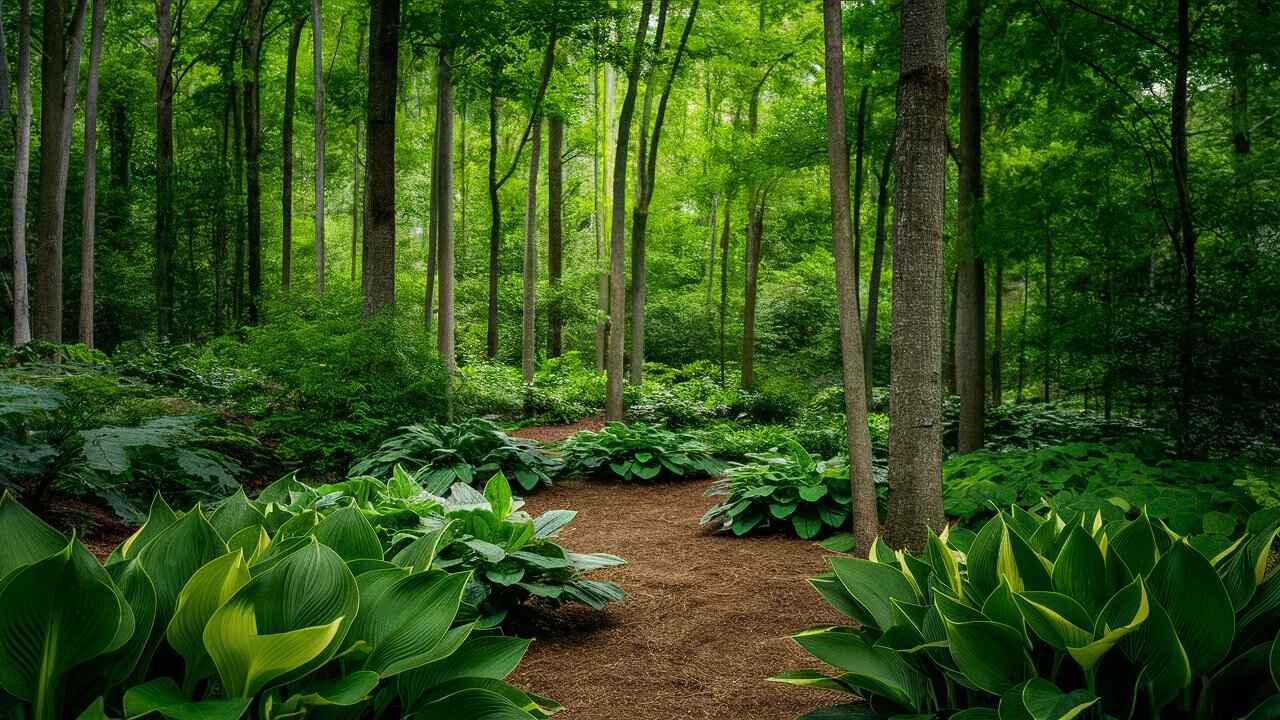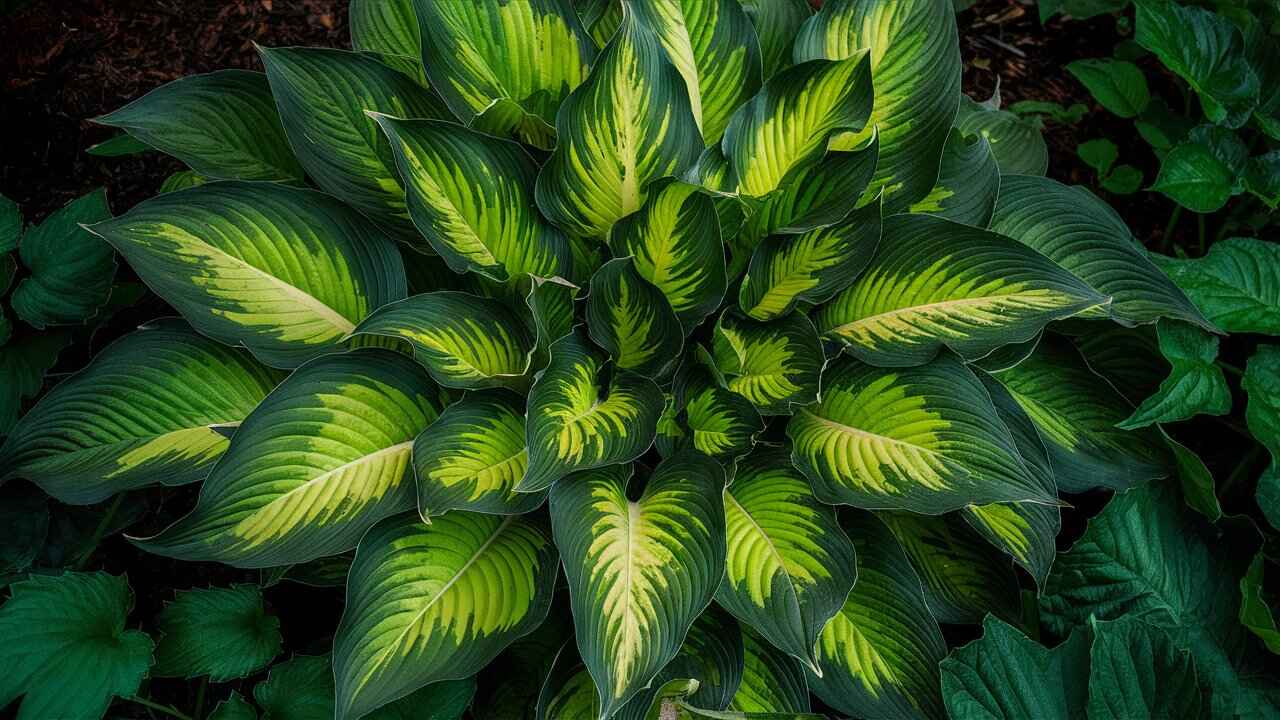Perhaps you need some greenery to enhance the area of your garden or yard; hosta plants are good to go. They are vibrant in growth and readily available for growth for all classes of gardeners from the advanced to the raw ones. In this post we will discuss the ins and outs of hosta plants, what type of hosta plants are available, how to take care of them, and hosta plants design options that will give your backyard a magical look.
What Are Hosta Plants?
A brief description of hosta plants
Hosta plants or plantain lilies are herbaceous perennial plants that are grown for the beauty of its foliage. These plants grow well under the canopy hence they are ideal for gardens that are relatively dark. It has varieties of shapes, colors and sizes of leaves that allow hostas to blend easily in the designer’s choice of the garden. These plants are relatively hardy and they will create the density that is required when it comes to matters concerning the texture on the landscape.
The Origins of Hosta Plants
Originally a part of ASIAN gardens, hostas found their way into gardens all over the globe over the period of time. They have also proved to be versatile and have an attractive looking appearance that has made them get acceptance. In Japan, they are often raised for ornamental beauty but the plants are also used in preparation of food. Some parts of hosta plants, the leaves and flowers especially in some species, are edible, though considered as varieties for gardens only..
Why Choose Hosta Plants?
The main idea that is associated with the utilization of hosta plants is the diversity of its application. It is found in different hues ranging from dark green, bright blue and even patterns of both green and blue. If a person wants a peaceful place or wants to just brighten up their garden space, then there is always a hosta for it. Secondly, once they are established, they need senior management and this makes them suitable for those people whose gardens, puppies, and yards they are looking for less attention, and besides, they are cheaper and are suitable for the environmentally conscious people who conserve water to be used in the yards.

The Different Varieties of Hosta Plants
Popular Hosta Varieties
Currently, it is possible to find hundreds of hosta varieties and each of them has its features. Some popular options include:
- Hosta ‘Francee’: Most preferred in the garden beds due to the contrast it brings, this variety comes with dark green leaves with a white border.
- Hosta ‘Blue Angel’: Agapanthus is a lush plant with big, greyish blue leaves and it has tall flowering spikes making it tall and graceful.
- Hosta ‘Patriot’: One cultivar in particular is famous because of its leaves having white edges and it is a bit more resistant making it suitable for most environments.
Size Matters
Hostas exist in many sizes, and this makes it possible to choose the right size depending on what you need for it in your yard. Although they range from as small as mini hosta that only grows to a few inches in height to giants that can grow up to more than three feet tall, there is a hosta for any location. When designing a garden, you will need to decide the size of the flowers stating how they need to be laid down so that their sizes can balance.
Colorful Options
In cultivars, the most common is green; however, there are also beautiful blues and golds present in hostas. Blue hostas are especially beautiful; the ‘Halcyon’ type, for example; and yellow ones, like ‘Sun Power,’ shine as if they are illuminated in the shade. The use of different color hosta is a great way to achieve a commanding aesthetic sensation to your garden adding vitality.
Growing Hosta Plants Successfully
Ideal Conditions for Growth
Hostas are partial to full shade loving plants, and they are excellent for those hard to plant areas of the garden where the sun hardly shines. However, some varieties can take more of it, especially if watered sufficiently for example the East Indian Anastasia. A preferred or suitable environment most often has good drainage and the soil contains organic material. You can improve the quality of the soil by adding compost or leaf mold to the soil to help the healthy growth of plants.
Watering and Fertilization
Even though hostas are rather xerophytes, during and after the establishment, they should be watered regularly, possibly in anticipation of hot weather. Ensure that the soil is moist always, but try to avoid water logging the soil all the time. When in flower, the hostas should be fed with an organic fertilizer since they grow very fast during this period, feed them again during mid summer. Don’t over apply the fertilizer as this could be harmful to the plants; always refer to the package guide to apply the fertilizer.
Managing Pests and Diseases
In most cases of gardening, hostas are quite immune to pests but they are once in a while affected by slugs and snails. These little beasts love to feed on hosta leaves and while there is no cure for this disease, it is possible to minimize its effects by using the copper barriers or the organic slug baits. Certain diseases afflicting plants include signs such as leaf spots or wilting that are recommended to be addressed as soon as they are discovered.
Creative Uses for Hosta Plants
Designing a Hostas Garden
These plants are incredibly versatile which permits the hobbyists to bring hundreds of ideas in their garden designs. They can be used at the base to provide that look of density, say along the pathways or edges. Plant them along with other shade preferring plants like ferns and astilbes in order to achieve a good combination of plants. Play with the concepts such as height variety and leaf structure to achieve an interesting garden experience.
Container Gardening with Hostas
As is evident they are ideal for container gardening, and thus you can place them on patios, balconies, or even doors. Select pots that can contain their root systems and these should be pots with good drainage systems. It is also possible to blend different varieties in a single basket and this will make the centerpiece add value to your outside space.
Incorporating Hostas into Landscapes
They are very effective in the customer’s garden when grown in mixed plantings; this is because they help to frame flowering plants. Best planted behind perennials that flower in summer and are bright, this way you will get a cascade effect. Their foliage can also be used as an appealing background for the ornamental grasses as well as flowering shrubs.
Maintenance Tips for Healthy Hosta Plants
Seasonal Care
During this time, the hostas come out of the ground and start to produce new leaves swiftly. It is also the right time to apply fertilizer, as well as prune, if at all this is deemed necessary. Do not allow weeds to grow near your hostas because they will compete with the hostas for the nutrients. In the fall, remove the foliage after it has withered as the diseases the plant might be carrying become worse during the winter.
Dividing Hosta Plants
Hostas are large and vigorous plants and to allow them to grow healthily and rebloom, they should be divided every 3-5 years. The procedure entails taking the plant and proceeding to divide it into some parts that are good to be transplanted. This not only revives the plants but also gives a chance of expanding the garden type and the number of flowers to grow.
Preparing for Winter
If the locations are cold, hostas need certain types of protection during the winter period. To also avoid frost heave, the area around the plants is mulched around the base where the roots are located. It is recommended that if you reside within an area that goes through heavy winters, then it is wise to use burlap or a frost cloth and cover your hostas.

Environmental Benefits of Hosta Plants
Enhancing Biodiversity
Such lower plants as hostas also affect the totality of species that exist in gardens and yards which include insects and other wildlife since it provides them food and shelter. Hostas are easily grown from divisions and can be propagated each spring; the flowers, which set on tall spikes in late summer, are pollinated by bees and butterflies, so it is a good choice for an environment-friendly garden.
Soil Health Improvement
Sometimes, just as individuals benefit from taking vitamins and minerals, hostas can help the soil as well. They also have huge root systems that enable them to create air pockets that enhance the draining of water as well as root out surrounding vegetation. Eventually, their leaves turn yellow and fall, thus adding organic matter to the health of the ecosystem.
Water Conservation
After hostas are grown in the garden for some time, those varieties which solve specific environmental conditions tend to require little or no watering, therefore, water wise. When you use hostas in your garden, then planting the flowers is easier and requires even less water than the usual flowering plants.
Conclusion
Hosta is an attractive and incredibly useful plant that can be successfully used in any garden for the beginner grower to the experienced gardener. Because they have specific leaves and do not require much care, they are ideal plants to increase the exterior attractiveness. Knowing these needs and innovative applications, you can transition your garden into a beautiful and alive space.
FAQs
What are hosta plants?
Hosta are herbaceous perennials commonly referred to as plantain lilies are extremely valued for their attractive foliage and grow best in shady borders of the gardens.
Why should I choose hosta plants for my garden?
Hostas types are easily grown, they can grow to large attractive mounds, are of various colors and sizes and they can enhance any given design in the garden.
What should I do to ensure the proper health of my hosta plants?
The ideal conditions of growing hostas are in the partial or full shaded area with well-draining soil. They should be watered on a regular basis especially when summer has come and they require a balanced fertilizing in early spring and mid summer.
Who are some pests that people usually encounter and how can such pests be eliminated?
Although considering the benefits of hostas they can attract slugs and snails to your garden. This you can employ techniques such as copper protection barriers or organic pellets of slug.
Also Read: Hustler Mowers: Extreme Direct To Quality Lawn Care





